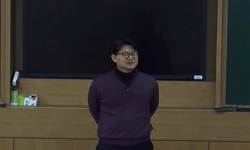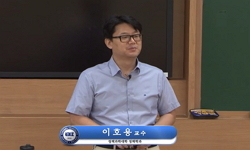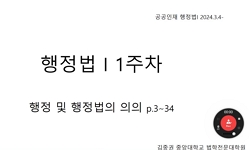중국행정을 연구하기 위해서는 타당성의 맥락과 발견의 맥락을 유기적으로 심화시킬 필요성이 있다. 본 연구는 우선 발견의 맥락에 초점을 두고서 1947∼2003년까지 사회주의중국의 중앙행정...
http://chineseinput.net/에서 pinyin(병음)방식으로 중국어를 변환할 수 있습니다.
변환된 중국어를 복사하여 사용하시면 됩니다.
- 中文 을 입력하시려면 zhongwen을 입력하시고 space를누르시면됩니다.
- 北京 을 입력하시려면 beijing을 입력하시고 space를 누르시면 됩니다.
https://www.riss.kr/link?id=A102012003
- 저자
- 발행기관
- 학술지명
- 권호사항
-
발행연도
2006
-
작성언어
Korean
- 주제어
-
등재정보
KCI우수등재
-
자료형태
학술저널
- 발행기관 URL
-
수록면
175-198(24쪽)
- 제공처
- 소장기관
-
0
상세조회 -
0
다운로드
부가정보
국문 초록 (Abstract)
중국행정을 연구하기 위해서는 타당성의 맥락과 발견의 맥락을 유기적으로 심화시킬 필요성이 있다. 본 연구는 우선 발견의 맥락에 초점을 두고서 1947∼2003년까지 사회주의중국의 중앙행정부인 國務院의 조직(기구수, 조직계층, 기구개편, 기능?기구), 인력, 예산지출, 행정법규의 全과정의 변화를 實證分析한다. 중국인민의 주권과 기본이익을 효과적으로 보호하고 실현하는 제도인 국무원은 국가의 최고권력기관의 집행기관이며 국가의 최고행정기관이라는 성격을 갖는다. 그러나 국무원의 이러한 정체성(identity)은 고정적이고 정태적인 것이 아니라 역사전통, 사회구조, 국제관계, 경제요인, 정치요인 등 다양한 요인에 의해 역동적 혹은 점진적인 변화를 해오고 있다. 국무원의 이러한 변화를 실증분석한 결과와 함의를 정리하면, 첫째, 마오쩌똥 시기의 국무원은 대약진 등 정치적?이념적 측면이 강화된 시기로서 국무원의 제도적 정착화가 지체되고 미흡하였다. 둘째, 덩샤오핑 시기의 국무원은 개혁개방과 4개현대화 논리가 헌법, 국무원조직법 등 법령이나 제도화로 이어져 국무원의 책임성과 자율성이 상대적으로 강화되었다. 셋째, 쟝쩌민 시기의 국무원은 개혁개방의 지속, 아시아금융위기, WTO가입 등으로 국무원의 전문성, 능률성, 국제규범성이 강화된 것으로 해석할 수 있다.
다국어 초록 (Multilingual Abstract)
The Guowuyuan in Maoist era was in lack of the institutionalization by emphasizing idealogical factors. The Guowuyuan in the Deng Xiaoping era took the responsibility and autonomy by enacting laws and institutionalization according to the Reform & Opening Policy and the Four Modernizations. The Guowuyuan in the Jiang Zemin era enhanced professionalism, efficiency, and global administration standards through the consecutive Reform & Opening Policy, Asian financial crisis, and the entrance of the WTO.
To study Chinese public administration, it would be better to deepen the relationship between the context of validity and the context of discovery. Focusing on the context of discovery, this paper empirically analyzes the whole period of the Chinese C...
To study Chinese public administration, it would be better to deepen the relationship between the context of validity and the context of discovery. Focusing on the context of discovery, this paper empirically analyzes the whole period of the Chinese Central Government(Guowuyuan) on the organization(apparatus number, hierarchical structure, apparatus reshuffling, function & apparatus), human resource, budget expenditure, and administrative law on the socialism of China from 1947 to 2003. Representing the executive echelons of top power and the top administrative body, the Guowuyuan protects Chinese sovereignty and basic interests. The identity of the Guowuyuan, however, has not been fixed or static but dynamic or gradual due to the factors such as, historical traditions, cultural influence, social structure, real politics, economic situation and political situations.<br/>
The Guowuyuan in Maoist era was in lack of the institutionalization by emphasizing idealogical factors. The Guowuyuan in the Deng Xiaoping era took the responsibility and autonomy by enacting laws and institutionalization according to the Reform & Opening Policy and the Four Modernizations. The Guowuyuan in the Jiang Zemin era enhanced professionalism, efficiency, and global administration standards through the consecutive Reform & Opening Policy, Asian financial crisis, and the entrance of the WTO.
목차 (Table of Contents)
- 한국어 초록
- Ⅰ. 서론
- Ⅱ. 중국 행정연구의 이론적 논의
- Ⅲ. 중국 중앙행정부(國務院) 변화의 실증분석
- Ⅳ. 중국 중앙행정부(국무원) 변화의 실증분석의 함의
- 한국어 초록
- Ⅰ. 서론
- Ⅱ. 중국 행정연구의 이론적 논의
- Ⅲ. 중국 중앙행정부(國務院) 변화의 실증분석
- Ⅳ. 중국 중앙행정부(국무원) 변화의 실증분석의 함의
- Ⅴ. 결어
- 참고문헌
- 저자소개
- Abstract
동일학술지(권/호) 다른 논문
-
- 한국행정학회
- 유평준(兪平濬)
- 2006
- KCI우수등재
-
한국행정학의 논리(강신택 저, 박영사, 2005, 333쪽 18,000원, 89-7189-267-6)
- 한국행정학회
- 이종범(李宗范) (서평자)
- 2006
- KCI우수등재
-
지역산업진흥사업육성정책을 위한 산업클러스터 평가척도개발
- 한국행정학회
- 원구환(元求桓)
- 2006
- KCI우수등재
-
젠더관점을 통해 본 멘토링의 기능과 장애요인: 지방자치단체 공무원을 대상으로 한 실증연구
- 한국행정학회
- 원숙연
- 2006
- KCI우수등재





 KISS
KISS







